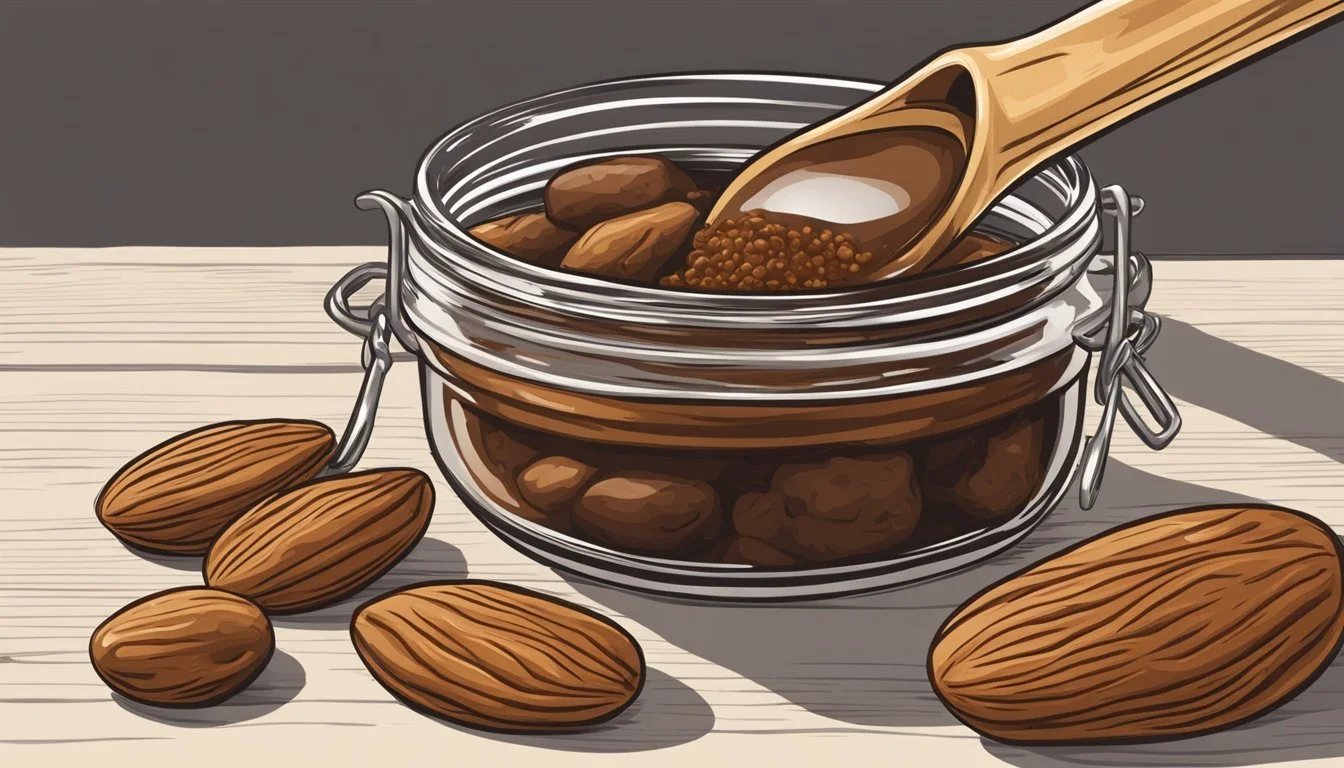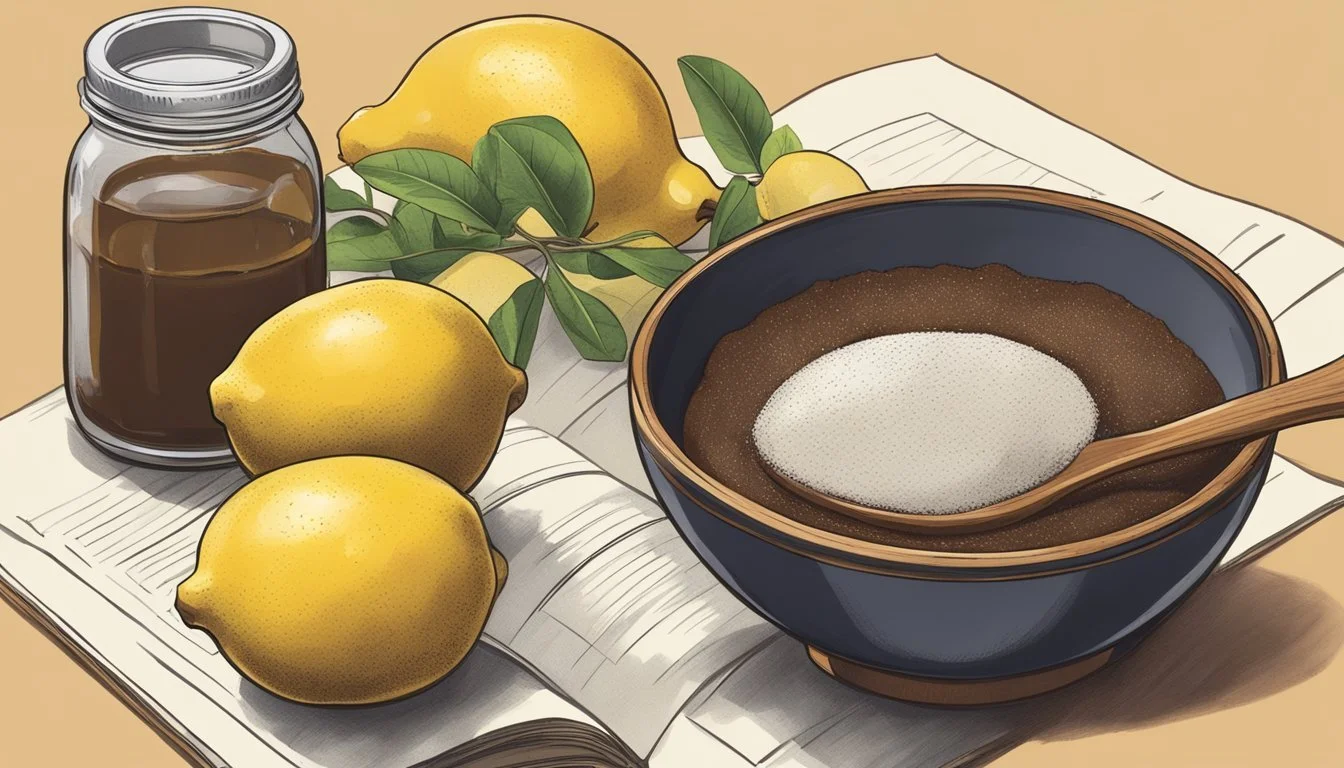How to Substitute Tamarind Paste for Lemon Juice
A Simple Guide
Tamarind paste is a common ingredient in various cuisines around the world, known for its tangy and slightly sweet flavor profile. It plays a significant role in adding depth and acidity to dishes, making it a staple in many recipes. However, when tamarind paste isn't readily available, culinary enthusiasts and chefs alike may seek suitable substitutes that can mimic its unique taste and properties.
Substituting tamarind paste poses the challenge of replicating its complex flavor, which is both sour and sweet with a fruity undertone. Lemon juice emerges as a potential alternative, offering the necessary acidity to recipes that normally rely on tamarind. They must be mindful, though, that lemon juice is sharper and lacks the sweetness of tamarind. Therefore, to achieve a closer match to tamarind paste's flavor, combining lemon juice with a sweetening agent, such as brown sugar, becomes essential. This blend aims to balance the tartness of the lemon while introducing the sweetness needed to approximate tamarind's distinctive taste.
As with any substitution, the context of the dish dictates the precise ratio of lemon juice and sweetener required to replace tamarind paste effectively. Experimentation and adjustment are key, enabling cooks to fine-tune the substitution to their specific dish's flavor profile and maintain the integrity of the original recipe as closely as possible.
Understanding Tamarind Paste
Tamarind paste is a key ingredient in various cuisines worldwide, valued for its unique sweet and sour flavor that contributes depth to dishes. This section explores the origins and culinary uses of tamarind paste and examines its nutritional profile.
Origins and Culinary Uses
Tamarind originates from Africa but has become extensively used in Asian cuisine, particularly within Indian and Thai dishes. The fruit's pulp is extracted, concentrated, and made into a paste that carries a distinctive sour flavor, making it an indispensable element in recipes like pad Thai and various Indian cooking sauces.
Culinary Uses of Tamarind Paste include:
Asian Cuisine: Enhances sauces, marinades, and soups with its sour taste.
Indian Dishes: Integral to chutneys, curries, and the classic tamarind rice.
Thai Dishes: Provides acidity in dishes like pad Thai and tamarind fish.
Nutritional Profile
The paste is not only known for its flavor profile but also for its nutritional benefits. It contains significant amounts of iron and potassium, which are essential for various bodily functions.
Key Nutritional Components:
Nutrient Importance Iron Important for oxygen transport Potassium Helps regulate fluid balance
In conclusion, tamarind paste is a versatile ingredient that imparts a sweet and sour flavor to dishes and offers nutritional benefits. Its use in Indian and Thai cuisine underscores its global culinary significance.
Exploring Lemon Juice Characteristics
In the culinary world, lemon juice is revered for its sour flavor and high acidity level. It is a versatile ingredient used across various recipes to add a zesty brightness.
Flavor Profile
Lemon juice is characterized by its high acidity and sour flavor. It has a pH level typically ranging between 2 and 3, which contributes to its tartness. This makes it an essential component in recipes that require a bright, acidic taste to balance sweetness or richness.
Acidity: Integral for cutting through fats and balancing flavors.
Taste: Sharp and prominent, capable of enhancing other ingredients.
Common Culinary Applications
Lemon juice's versatility makes it a staple in many kitchens, with applications extending from marinades to desserts.
Marinades: Lemon juice's acidity helps tenderize meats and impart flavor.
Dressings: It's frequently used to create vinaigrettes and dressings for salads.
Desserts: Adds a refreshing note to sweets and balances sugary profiles.
Sauces: Used to deglaze pans and create tangy sauces.
Nutritional Aspects
Apart from its culinary uses, lemon juice is also valued for its nutritional benefits.
Vitamin C: A vital antioxidant, essential for immune system function.
Potassium: Important for nerve function and blood pressure regulation.
Nutrient Content in Lemon Juice Vitamin C High Potassium Moderate
Lemon juice not only enhances food with its distinct flavor but also offers health benefits, making it a desirable addition to many dishes.
Tamarind Paste as a Substitute for Lemon Juice
When substituting tamarind paste for lemon juice, the reader should consider the flavor profile and the appropriate ratios for substitution to achieve a balance of taste. Tamarind paste can mimic the sourness of lemon juice while adding a hint of sweetness.
Taste Comparisons and Adjustments
Tamarind paste offers a sweet and sour taste that is somewhat more complex than the straightforward tartness of lemon juice. When using tamarind paste in place of lemon juice, one should be mindful of the additional sweetness it brings. It may be necessary to reduce other sweeteners in the recipe to maintain the intended flavor balance.
Ratio and Measurements for Substitution
To substitute tamarind paste for lemon juice effectively, a proper ratio must be followed. The general guideline is:
1 tablespoon of lemon juice can be substituted with a mixture of 1 teaspoon of tamarind paste diluted in 2 teaspoons of water.
This mixture should then be adjusted with sugar if the recipe requires.
When using tamarind paste as a souring agent, one must also consider the dish's desired consistency, as tamarind paste will thicken the final product more than lemon juice.
Alternative Substitutes for Tamarind Paste
When looking for a tamarind paste substitute, the key is to replicate its unique blend of sourness and sweetness. Below are specific alternatives grouped by the nature of the substitute and their suggested uses.
Fruit-Based Alternatives
Amchur Powder:
Made from dried green mangoes, amchur powder can replace tamarind paste on a 1:1 basis. It imparts a tangy, slightly sweet flavor.Dried Fruit Paste:
Blended dried apricots, dates, or prunes with lemon juice create a paste that can substitute tamarind in equal measures.
Vinegar-Based Substitutes
Vinegars:
A variety of vinegars can serve as a substitute.Apple Cider Vinegar: Sweet and fruity, a suitable choice for dressings.
Rice Vinegar: Milder in taste, ideal for Asian cuisine.
Balsamic Vinegar: Deep and slightly sweet; use sparingly.
Other Vinegars: White, red wine, and white wine vinegar can be mixed with sugar to balance the tartness.
Other Savory Alternatives
Condiments:
Worcestershire Sauce: Mix with lemon juice and sugar to approximate tamarind's flavor.
Fish Sauce or Soy Sauce: These can add the umami factor but use in smaller quantities to avoid overpowering the dish.
Sweet Substitutes
Syrups and Sugars:
Pomegranate Molasses: This thick syrup offers a good balance of sweet and sour.
Maple Syrup or Brown Sugar: To replicate tamarind's sweetness, these can be combined with acidic ingredients like vinegar or lemon juice.
Chutneys and Marmalade:
Mango or Date Chutney: These are sweeter than tamarind but can mimic its fruity notes.
Marmalade: Offers a citrusy sweetness that can substitute for tamarind, especially in marinades and dressings.
Applying Tamarind Substitute in Recipes
When substituting tamarind paste in recipes, one aims to replicate its unique sweet and sour flavor profile while maintaining the intended depth of flavor.
Adjusting Flavors in Soups and Curries
In soups and curries, the sour flavor of lemon juice can mimic tamarind’s acidity. A chef might combine lemon juice with a hint of sugar to achieve the desired sweet and tangy flavor. For every tablespoon of tamarind paste, one can use one tablespoon of lemon juice with an added teaspoon of sugar. This substitution not only preserves the sour notes but also introduces the crucial sweet notes that tamarind imparts.
Creating Marinades and Dressings
Marinades and dressings benefit from the balance of sourness and sweetness that tamarind paste provides. When using lemon juice as a substitute, it is essential to counterbalance its tartness. To do this:
Mix 3 tablespoons of lemon juice with 1 tablespoon of a sweet component like honey or brown sugar.
Add a dash of soy sauce to incorporate umami, replacing the caramel depth that tamarind would otherwise add.
This mixture should be used in equal parts to the amount of tamarind paste called for in recipes such as a Pad Thai marinade.
Adapting Desserts and Sweet Dishes
Desserts often require the subtle sweet and sour combination that tamarind paste is known for. A cook can substitute tamarind with lemon juice by reducing its acidity. For every tablespoon of tamarind needed, use one tablespoon of lemon juice and blend with two teaspoons of sugar or maple syrup. This emulates tamarind’s complexity without overpowering the dessert with sharp sourness.
Health Considerations and Dietary Restrictions
When replacing tamarind paste with lemon juice, it is important to consider nutritional differences and how they may impact specific dietary requirements, such as those for individuals following vegan or vegetarian diets, and for those with food allergies or sensitivities.
Vegan and Vegetarian Diets
Tamarind paste is derived from the fruit of the tamarind tree and is inherently vegan. It contains notable amounts of iron and potassium, which are essential minerals. Those following vegan or vegetarian diets might rely on tamarind paste as a valuable source of these nutrients. On the other hand, lemon juice also fits vegan and vegetarian diets but differs in its nutritional profile. Lemon juice is high in vitamin C but lower in minerals like iron and potassium.
Tamarind Paste:
Iron: essential for blood health
Potassium: regulates fluid balance and nerve signals
Lemon Juice:
Vitamin C: important for the immune system
Food Allergies and Sensitivities
Both tamarind and lemon juice are generally considered safe for those with common food allergies, as they are not part of the major allergenic foods such as nuts, soy, and gluten. However, some individuals might have sensitivities or allergies to citrus fruits, such as lemons. In such cases, tamarind paste serves as an allergen-free alternative to lemon juice. It is critical to check both for direct allergies to tamarind or lemon and for reactions to any additives present in commercial preparations of these products.
Culinary Tips and Tricks
When substituting tamarind paste for lemon juice, a chef must consider how to replicate the unique sourness and depth of flavor that tamarind brings to Indian and Asian cuisines. This section will provide practical advice for creating homemade tamarind paste, its storage, and the art of using tamarind in various dishes.
Making Homemade Tamarind Paste
One can create a simple tamarind paste by combining tamarind pulp and water. Here’s a straightforward recipe:
Soak 200 grams of tamarind pulp in 1 cup of boiling water for about 30 minutes.
Once the pulp is softened and the water has cooled, the chef should use their hands to squeeze and mix the pulp into a paste-like consistency.
Next, they will need to strain the mixture to remove any fibers and seeds, yielding a smooth tamarind paste.
For added sweetness, they may stir in a teaspoon of sugar until it's fully dissolved.
Storage and Shelf Life
Properly stored tamarind paste can last a long time. Chefs should keep homemade tamarind paste in an airtight container in the refrigerator, where it will retain its quality for up to three months. For longer shelf life, the chef can freeze the paste; when frozen, it can last for up to six months while preserving its tangy flavor.
Using Tamarind in Fusion Cuisine
Tamarind paste is versatile and can bring a tangy depth of flavor to a variety of dishes, from a traditional Indian curry to a spicy beef rendang. Chefs often incorporate it into sauces and marinades to add moisture and a distinctive sour taste. In fusion cuisine, tamarind can be used to create interesting flavor contrasts or enhance other ingredients, always mindful of the tartness and thickness it adds to the dish.
Recipe Spotlight: Experimenting with Tamarind
This section delves into the versatility of tamarind paste when substituting for lemon juice in various dishes, from the nuanced layers in Pad Thai to enhancing Indian curries and sweet desserts.
Adjusting Tamarind Concentration in Pad Thai
Pad Thai often calls for a balance of sweet and sour flavors, where tamarind paste is a fundamental ingredient. To substitute lemon juice with tamarind paste:
Begin with half the amount of tamarind paste compared to lemon juice, as it is stronger in flavor.
Adjust to taste, maintaining the harmony with the fish sauce and preserving the dish's characteristic tang.
Tamarind Infusion in Indian Curry
Indian dishes benefit tremendously from the depth of flavor that tamarind paste introduces:
Add one teaspoon of tamarind paste to replace the sourness in curries, usually obtained from lemon juice.
The tamarind should meld with the spices, such as ginger, without overpowering the dish.
Sweet and Sour Desserts with a Tamarind Twist
Tamarind's unique sweet and sour taste can elevate desserts and fruit syrups:
Integrate tamarind paste sparingly into syrups or glazes, starting with a one-to-one ratio with the sugar component.
In dishes requiring a citrus tang, tamarind paste can provide complexity beyond the usual sweet and sour flavors.
Conclusion
The quest for a tamarind paste substitute often leads individuals to lemon juice, an accessible and versatile ingredient. In culinary practices where tamarind's sour-tangy profile is essential, lemon juice stands out as an effective alternative. The substitute for tamarind paste using lemon juice primarily aims to mimic the distinct tartness that tamarind imparts to various dishes.
To substitute tamarind paste with lemon juice, a combination of lemon juice and an additional sweetener, such as brown sugar, is recommended. This blend harmonizes the sourness of lemon with the requisite sweetness, replicating tamarind paste’s flavor profile.
Tamarind Paste Lemon Juice Additional Sweetener 1 tablespoon 1/2 tablespoon 1/2 tablespoon brown sugar
The cultural significance of tamarind cannot be understated, as it holds a pivotal role in many regional cuisines. Nevertheless, lemon juice can respect these traditions by ensuring that the fundamental taste dynamics remain unaltered in the dish's essence.
One should remember that while substitutions can closely approximate the desired taste, the exact flavor complexity of tamarind is unique. Chefs and home cooks alike need to consider the specific recipe requirements and adjust the proportion of lemon juice and sweetener accordingly. When used thoughtfully, lemon juice can serve as a commendable stand-in, allowing the dish to maintain its integrity and continue to delight the palate.







